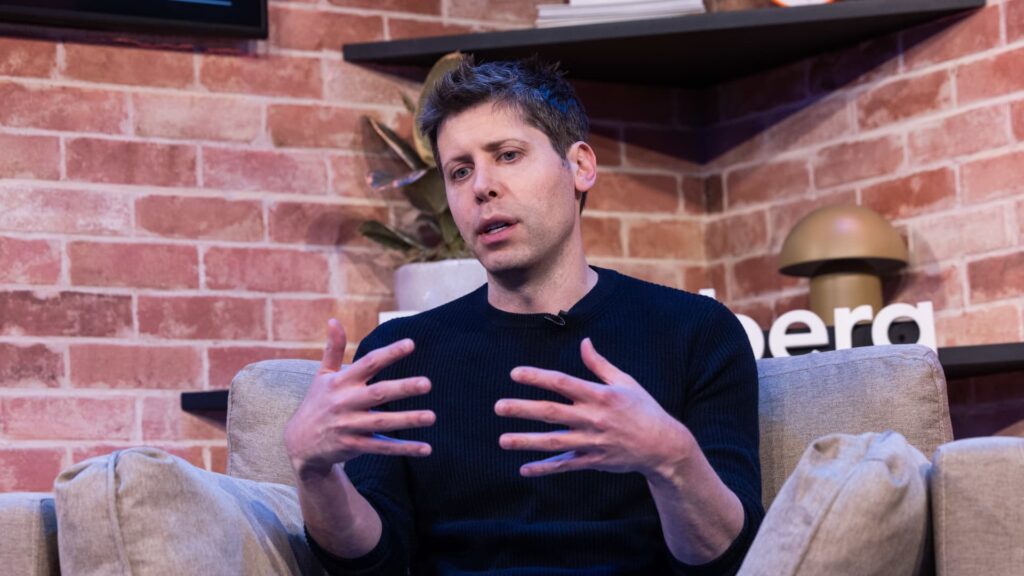Sam Altman, CEO of OpenAI, during an interview at Bloomberg House on the opening day of the World Economic Forum in Davos, Switzerland, on Jan. 16, 2024.
Chris Ratliffe | Bloomberg | Getty Images
DAVOS, Switzerland — OpenAI founder and CEO Sam Altman said the night he was pushed out by the board was “wild,” and he felt “super confused” and was “super caught off guard.”
“But this is the structure, and I immediately just went to go thinking about what I was going to do next,” Altman, OpenAI’s CEO, said in a private gathering convened at the Bloomberg House on the Davos Promenade on Tuesday.
“It was not until some board members called me the next morning that I even thought about really coming back,” continued Altman, reflecting on the dramatic turn of events that led to his ouster — and subsequent re-instatement — in November. “But, like, the board did have all of the power there.”
Indeed, the unusual corporate structure of OpenAI — the creator of the buzzy A.I. tool ChatGPT — is what led to Altman’s surprise ouster.
Typically, it’s rare to see a founder forced out of their company, but Altman’s power differs to that of other major tech founders, in part because he has no actual ownership of the entity itself.
“I have no equity in OpenAI,” Altman said in a May Senate hearing on artificial intelligence.
“You need a lawyer or an agent,” Senator John Kennedy quipped, in a remark that proved prescient.
The organizational chart of the generative AI startup, valued by private investors at $86 billion, is decidedly confusing. It ultimately proved to be bad for its founder, both in terms of safeguarding control and holding a financial stake in the firm.
OpenAI’s board of directors sits at the top of the power pyramid, and they are the consortium of voices responsible for controlling the 501(c)(3) charity, OpenAI Inc.
Between the board and the non-profit sits a capped-profit company dubbed OpenAI Global, which Microsoft inked a $10 billion investment deal with in January…
Read the full article here





